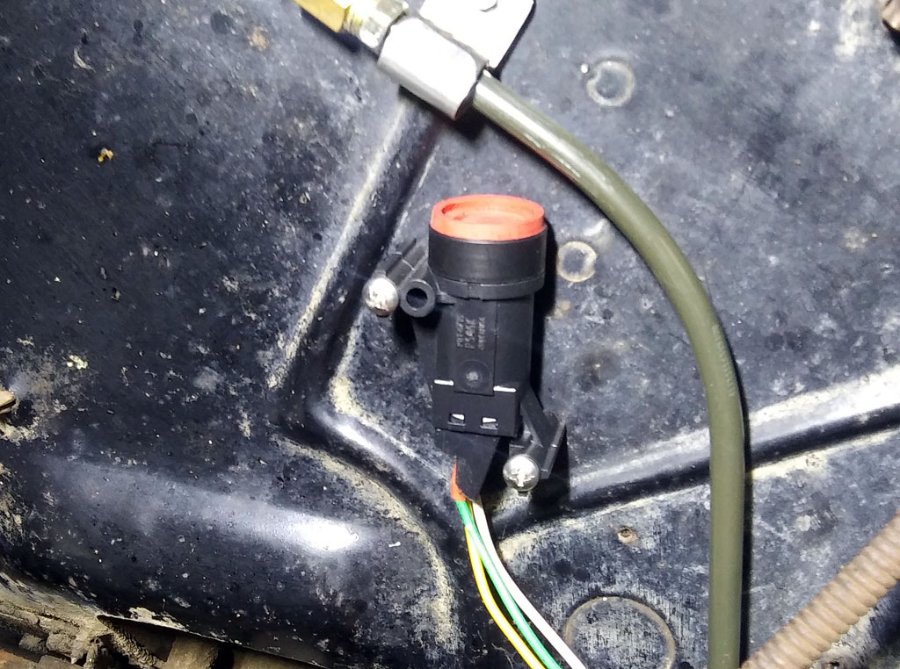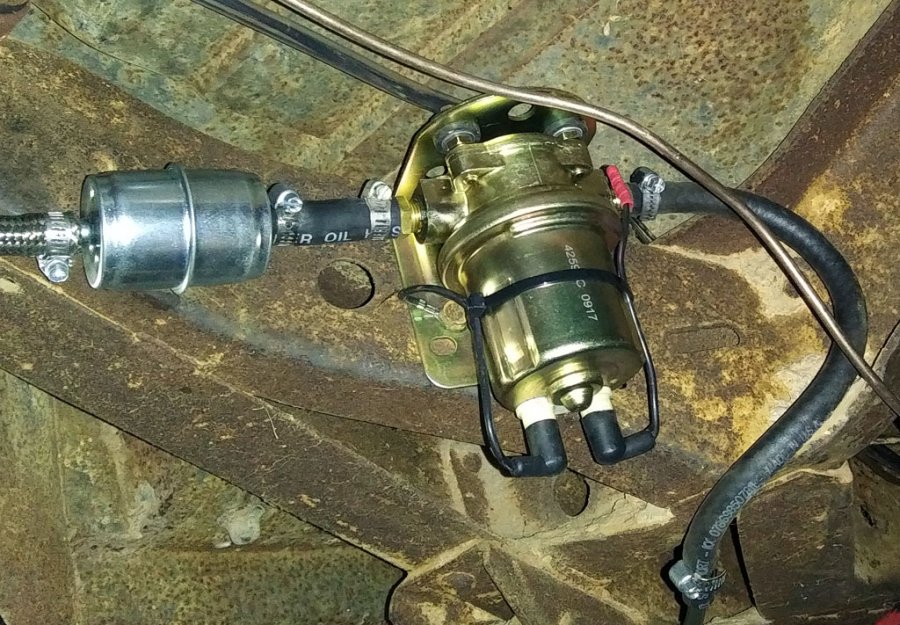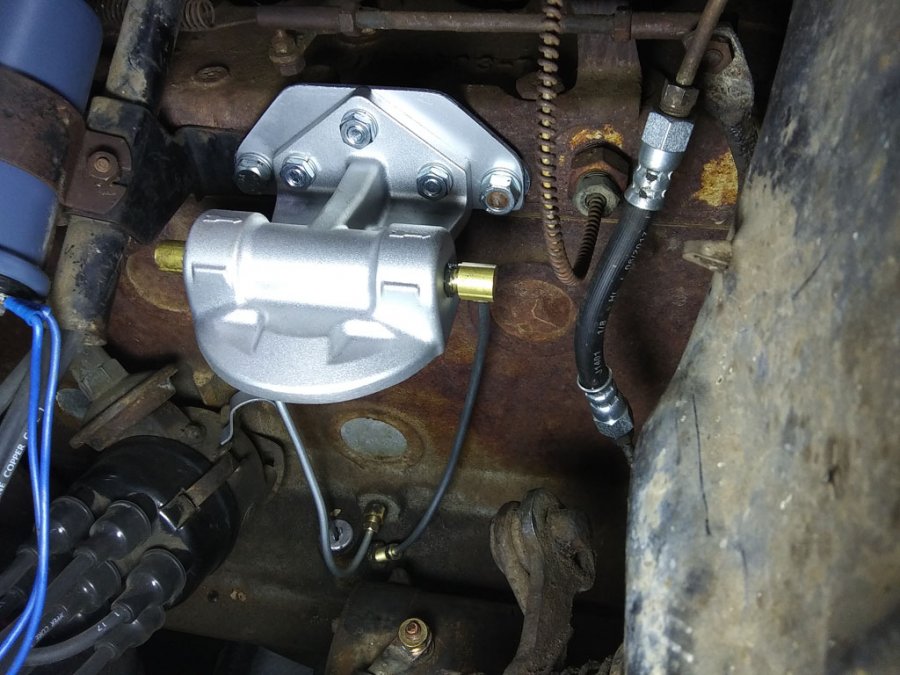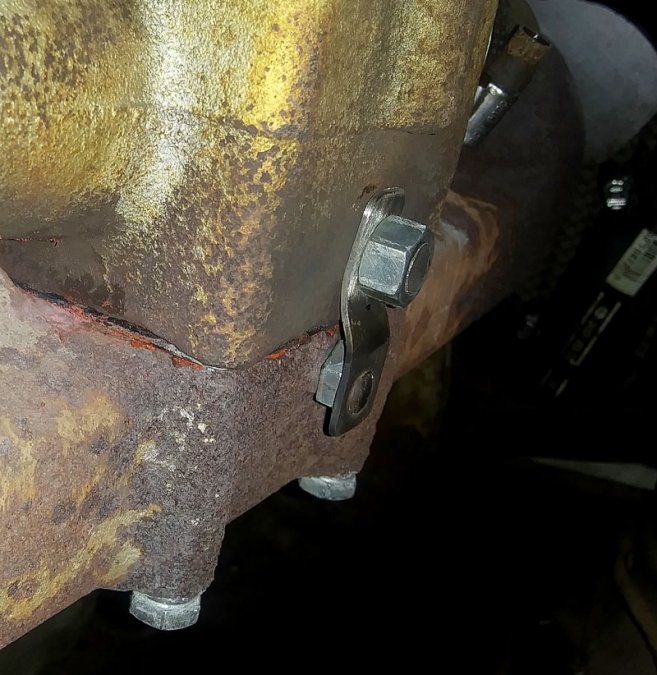-
Posts
2,555 -
Joined
-
Last visited
-
Days Won
83
Content Type
Links Directory
Profiles
Articles
Forums
Downloads
Store
Gallery
Blogs
Events
Everything posted by Sam Buchanan
-

1953 Plymouth Cranbrook Cuts out and Dies While Driving
Sam Buchanan replied to Kennyc135's topic in P15-D24 Forum
You can dink around with the rusted fuel system or fix it once and for all. New tank, gauge sender, lines, pump, carb rebuild and verify fuel cap vents. That will be the last time you need to mess with the fuel system. -

Carter B&B: The worst carburetor ever made?! Discuss...
Sam Buchanan replied to wagoneer's topic in P15-D24 Forum
https://www.pure-gas.org -

1948 flat six Plymouth special delux transmission question
Sam Buchanan replied to Bern Pearson's topic in P15-D24 Forum
Some folks have swapped out the rear end for a more modern axle with a different ratio. Probably your best option is to adjust your expectations.....confine your travels to two-lane roads and enjoy the journey. Life can be pretty cool at 55-60 mph in an old car. ?- 13 replies
-
- 1
-

-
- plymouth transmission
- transmisssion conversion
-
(and 1 more)
Tagged with:
-

Carter B&B: The worst carburetor ever made?! Discuss...
Sam Buchanan replied to wagoneer's topic in P15-D24 Forum
Can't tell you how many times I've grinned motoring down a nice two-lane in the P15 thinking about that puny little single-barrel doing its thing with no complaints. -

This is for the Forum Administer Selecting a topic to view
Sam Buchanan replied to desoto1939's topic in P15-D24 Forum
If seeing pages display in unexpected ways, try clearing the cache and browsing history in your browser. -
It is intended to shut off the pump if a hard impact (crash) occurs but I have no idea if it would work as intended. The modern cars that use these switches undergo a lot of engineering and crash testing---the only engineering these switches can receive in our old cars is of the shade-tree variety...... ?
-
Keith, am interested in the fuel issues you experienced, I suspect it was some sort of vapor lock problem. I switched to non-contaminated gas for awhile thinking it might alleviate the fuel percolation that can occur in the carb while the car is parked after a highway run on a hot day. But I couldn't tell any difference so went back to the cheap stuff with no additives. It could be that the electric pump located near the tank is less likely to have vapor issues than the mechanical suction pump in the hot engine bay. But in any case glad you were able to find a solution to the fuel problem on your car.
-
Yep, my regulator was doing that before it died. The replacement one-wire alternator has been flawless. ?
-
I like to search the archives using Google's site search function: site: p15-d24 "electric fuel pump" That search will bring up a bunch of threads. Pumps are personal preferences and there won't be a consensus. I replaced the mechanical pump with a block-off plate. The pump is powered via the ignition switch and also has a safety inertia switch (Ford) in the circuit: Having said this, my Triumph TR6 still has the mechanical pump but the first time it gives any problems it is history. ? Interestingly that pump has a primer lever on it but there is usually enough tank head pressure to deem it unnecessary.
-
Regular posters are no doubt tired of seeing me post about the electric pump on my P15 but I see this is your first post (several threads in the archives on this subject....the archives are your friend.... ) To address your questions in order: #1; Your choice on whether to run two pumps, but if you have a reliable electric pump why would you want to keep the antique mechanical pump with its failure modes? #2; That is what I did but not as a mounting point. See #4. #3; If the electric pump is part time you need a switch. If it is the sole full-time pump power it off the ignition circuit. If you go full-time you might consider an inertia safety switch. #4; I use a 6v Carter rotary pump located close to the fuel tank. There are other pumps available but the Carter seems to be a robust pump.
-
Even though I'm fortunate to be able to drive my P15 during winter (not snowbound and it has a good heater) I still only put about 5 gallons in the tank at one time. That way the fuel in the tank is being "spiked" fairly frequently and stays relatively fresh.
-
My P15 will happily sip whatever that stuff is that comes out of the pumps at the corner convenience store. ?
-
Well....the timing is uncanny. Yesterday afternoon I modified some wiring on the TR6 and when I turned the switch to test the mod smoke immediately escaped the wiring. LOTS of smoke.....kept on smoking even after I quickly shut everything down....filled the shop. A single wire must have been glowing red-hot for a few seconds and the vinyl insulation on the wire we buy at the local parts store quickly turns into thick smoke. There wasn't anything wrong with my mod but apparently the wire got pinched against ground in the process of putting things back together. Unfortunately, the British decided the radio supply shouldn't be fused (Lucas was the low bidder after all....) a point I had not yet determined. It is common knowledge in the aviation community to NEVER put this wire in an aircraft and I now have first-hand knowledge of why we don't. I rewired that portion of the car to put that circuit on a fuse so the smoke wouldn't have a chance to escape again. Smoke is hard to put back after it gets out. If I was building a new harness I would use the good stuff, it doesn't cost that much more. The insulation is Tefzel which doesn't turn to smoke and the wire is tinned copper. Here is one source: https://www.aircraftspruce.com/catalog/elpages/unshieldlwire.php This is what you use if you want to build the best harness possible.
-
Here is how to search the forum with Google: site: p15-d24.com wiring harness I found a ton of threads with this search string.
-
You may not find a thread specifically on the '48 D25. However, there are many threads about replacing wiring in cars of similar vintage. I suggest you post any specific questions you have and use the replies to form a composite picture of what you need to know.
-

Coolant Temperature Probe Ports Across The Years
Sam Buchanan replied to keithb7's topic in P15-D24 Forum
-

Best type of plastic tubing for oil canister lines?
Sam Buchanan replied to '41 Fat Bottom Girl's topic in P15-D24 Forum
In the aviation community we often use stainless steel braided teflon hoses for fuel and oil. Rubber hoses have a recommended service life limit, usually 5-7 years. The teflon hoses have no service limit. If someone wanted to deal with AN fittings and adapters the teflon hoses should last longer than any of us. -

Best type of plastic tubing for oil canister lines?
Sam Buchanan replied to '41 Fat Bottom Girl's topic in P15-D24 Forum
Nope, the newer copper-nickel brake lines can be easily bent with bare hands. They are what you need to use, they will outlast your time with the car. These were purchased pre-flared with the proper fittings. -

Is automotive paint all water based now in California?
Sam Buchanan replied to MarcDeSoto's topic in P15-D24 Forum
I agree Concept is a very nice paint, used it on several projects. However, PPG has discontinued it. -
I removed the entire mechanism, plugged the holes, and installed a stainless steel block-off plate between the manifolds. Here is the method I used to plug the holes where the shaft used to be. I think it was a 5/16" bolt that was a good fit in the holes.
-
Several years ago I needed a fuel cap gasket for the kit car. I ordered a piece of viton from McMaster Carr and cut a new gasket.
-

Installing a Spin-on Bypass Oil Filter (photos)
Sam Buchanan replied to Sam Buchanan's topic in P15-D24 Forum
A bypass filter has a much finer element than a full-flow filter which is possible due to the much lower flow rate. Here is the data for the WIX 51051: https://www.wixfilters.com/Lookup/PartDetails.aspx?Part=155265 I'm assuming this finer element is necessary to achieve similar filtration to what a full-flow system can provide since it takes a lot longer for all the oil to pass through the bypass filter. -

Engine noise identification and black carbon
Sam Buchanan replied to wagoneer's topic in P15-D24 Forum
Probably also due to the use of non-detergent oil for many decades. -
Hmmmm.....that's a tough one. Have to wonder why welding occurred on the axle nuts. Was it because the threads on the axle are shot and the previous "mechanic" wanted to make sure the nuts don't give way and the wheels come off? Drastic action can be taken by cutting the nuts off the axles but what will be found once that is done? If the threads on the axles are worn away then the axles will have to be repaired by a machine shop or replaced. I can certainly understand why your guy is hesitant to touch this one. I can relate to this problem because the first time I pulled the drums on my P15 the threads on the left axle were heavily worn and the nut was barely holding any torque when I removed it. I was so concerned about ever being able to fully retorque that axle that I made a special trip to a fellow forum members house to salvage axles out of his old Dodge rear axle. Turns out I worked around the problem by buying new axle nuts at a John Deere store and the sharp threads on those high-quality parts gripped the old axles enough to allow full torque to be applied. Whew! But I have a set of good axles on the shelf now in case the old threads pull during future maintenance. My suggestion-----If your rear brakes are working properly now you might want to postpone pulling the drums until later down the road after you have chased other maintenance items. But this is going to have to be addressed at some point.....
-

Installing a Spin-on Bypass Oil Filter (photos)
Sam Buchanan replied to Sam Buchanan's topic in P15-D24 Forum
If your filter is plumbed into the original bypass loop, are you using a bypass filter? If so, what small bypass filter did you find?






